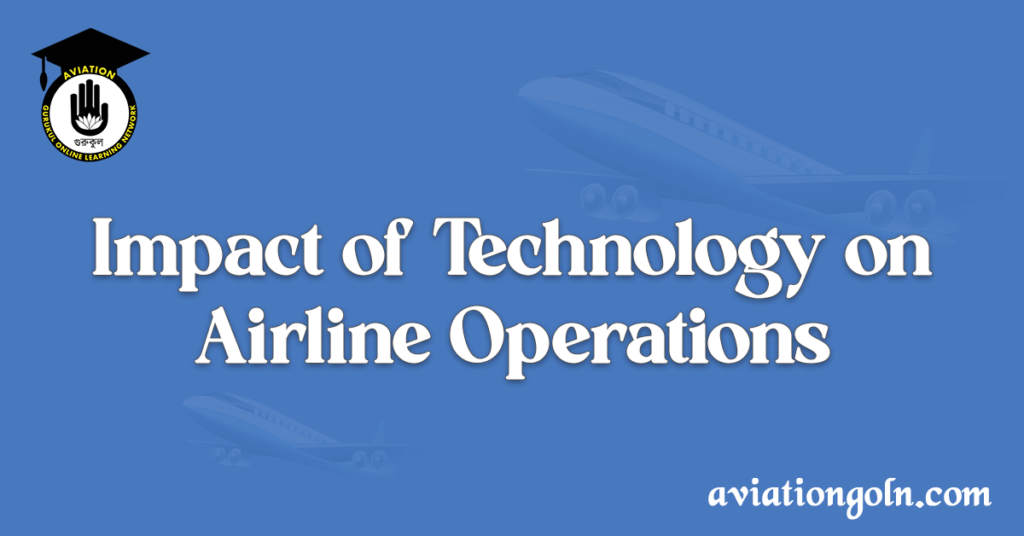The ever-evolving landscape of technology has, in recent years, permeated nearly every industry in the world, transforming operations, increasing efficiency, and providing new opportunities for innovation. One of the sectors that have experienced profound change due to technology is the aviation industry. This article delves into the myriad ways technology has impacted airline operations, from fuel efficiency and passenger experiences to safety and environmental concerns.
1. Enhanced Aircraft Efficiency and Design
Technological advancements have considerably changed the design and functionality of aircraft. Composite materials, lighter and more durable than traditional metals, are now used to construct planes, resulting in weight reduction and improved fuel efficiency.
Moreover, advancements in aerodynamics have also played a significant role. Modern planes are designed with winglets and refined wing shapes that reduce drag and thus save fuel. Additionally, engine technology has seen remarkable improvements. The latest engines are not only quieter but also more fuel-efficient and environmentally friendly.
2. Digitalization of Air Traffic Control (ATC)
The role of ATC is crucial in managing the traffic in the skies. With the help of technology, ATC systems have undergone significant digital transformations. Advanced systems like NextGen in the U.S. and the Single European Sky ATM Research (SESAR) in Europe aim to make air traffic management more efficient, safe, and environmentally friendly.
These systems leverage satellite technology instead of ground-based radar, ensuring more accurate aircraft tracking and allowing planes to fly more direct routes, saving both time and fuel.
3. Predictive Maintenance and Big Data
Historically, aircraft maintenance was done at regular intervals, regardless of whether there were any visible issues. With the advent of big data and predictive analytics, airlines can now perform maintenance based on actual aircraft needs. Sensors embedded in aircraft continuously collect data, which is analyzed to predict when parts might fail or need service.
By predicting maintenance needs, airlines can reduce unplanned maintenance events, improve aircraft availability, and thus enhance operational efficiency.
4. Passenger Experience
From booking a ticket to boarding the plane, technology has transformed the passenger experience.
- Booking & Check-in: Online booking systems, mobile applications, and automated check-in kiosks have made the process faster and more convenient for passengers.
- Biometric Screening: Airports and airlines have started implementing biometric screening at various checkpoints, using facial recognition or fingerprint scanning to speed up the boarding process and enhance security.
- In-flight Entertainment: Gone are the days of shared screens on the airplane aisle. Now, personal touch screens loaded with movies, games, and even internet connectivity are standard on many flights.
5. Safety Enhancements
Safety is paramount in aviation. With the help of technology, airlines can ensure even higher safety standards.
- Weather Forecasting: Advanced weather forecasting tools allow pilots to receive real-time weather updates, ensuring that they can take preventive measures against sudden weather changes.
- Collision Avoidance Systems: Modern aircraft are equipped with sophisticated collision avoidance systems that can detect nearby planes and recommend course changes to avoid potential collisions.
- Flight Data Monitoring: Continuous monitoring and analysis of flight data can help airlines identify and rectify potential issues before they become major problems.
6. Green Technologies and Environmental Concerns
The aviation industry has been under scrutiny for its environmental impact. With the help of technology, airlines are now striving to reduce their carbon footprint.
- Alternative Fuels: Research is ongoing on sustainable aviation fuels (SAFs) derived from renewable sources like algae, waste oils, or agricultural residues. These SAFs can significantly reduce carbon emissions.
- Electric and Hybrid Planes: Several companies are investing in electric and hybrid-electric propulsion technologies, aiming for a future where short-haul flights might be entirely electric, dramatically reducing emissions.
7. Automation and Artificial Intelligence (AI)
AI and automation have started making their presence felt in airline operations.
- Chatbots and Customer Service: Airlines use AI-driven chatbots to answer customer queries, make bookings, or provide information, ensuring 24/7 service without human intervention.
- Pilot Assistance: While pilots remain crucial, AI-assisted systems can help in reducing the pilot’s workload, especially during challenging flying conditions.
8. Drones in Airline Operations
Drones are playing an increasingly important role in aviation. Airlines and service providers use them for a variety of tasks, from inspecting aircraft and airport facilities to monitoring wildlife near runways to prevent bird strikes.
Conclusion
The symbiotic relationship between technology and airline operations is undeniable. As technology continues to evolve, so too will the ways in which airlines operate, enhancing efficiency, safety, and passenger experience. While challenges remain, especially concerning environmental concerns and the integration of new technologies into complex aviation systems, the future of airline operations looks promisingly high-tech.

